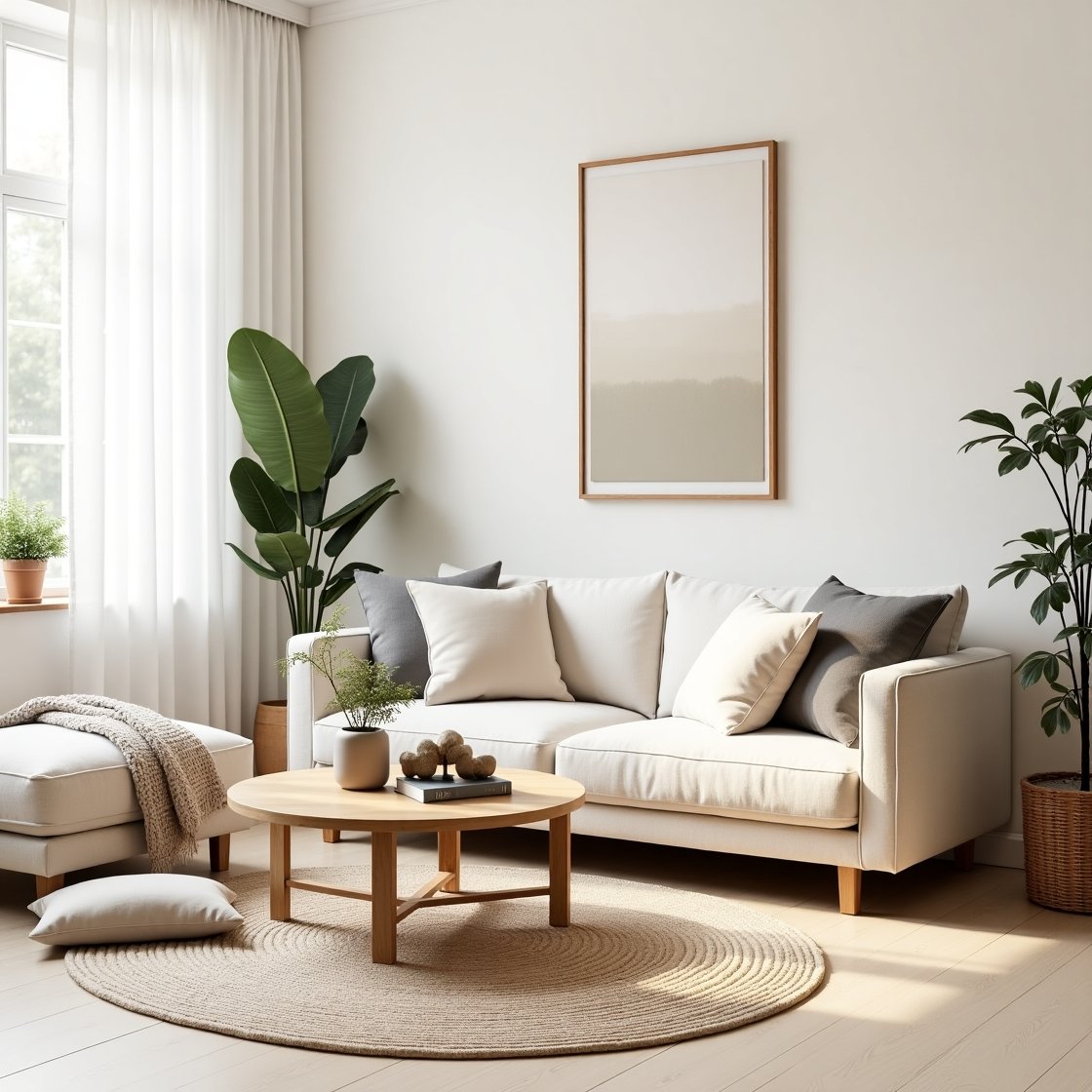Neutral color palettes are timeless, calming, and incredibly versatile. But without thoughtful styling, a neutral room can go from elegant to… well, a little dull. The good news? You can maintain the serene beauty of neutrals while still creating a space that feels rich, layered, and full of personality.
In this article, you’ll learn how to decorate a neutral room that’s anything but boring—using texture, contrast, and subtle details to make the space come alive.
1. Start with a Strong Base Palette
A neutral room doesn’t mean everything has to be the same shade of beige. A balanced palette includes:
- A dominant neutral (white, gray, beige, taupe, greige)
- A secondary tone (warm wood, stone, or soft contrast)
- One or two accent neutrals (black, cream, camel, etc.)
Mix cool and warm tones for depth, but stay within the neutral family to keep the harmony intact.
2. Layer in Textures
Texture is the most powerful tool in neutral design. It adds visual interest without using bold color.
Try layering:
- Linen, cotton, or velvet cushions
- A chunky knit throw
- Rattan or cane furniture
- Sheepskin rugs or faux fur accents
- Matte ceramics mixed with glossy glass or metal
The more tactile variety, the richer and more luxurious your neutral space will feel.
3. Mix Materials and Finishes
Material contrast can elevate a space from flat to fabulous.
Try combinations like:
- Raw wood + polished metal
- Stone countertops + woven accessories
- Smooth leather + rough linen
- Concrete surfaces + warm textiles
When materials contrast, even in a limited color scheme, your space will feel more layered and thoughtful.
4. Use Shape to Add Interest
If your room is full of rectangular shapes (which is common), balance that with curves and organic forms.
Ideas:
- A round mirror
- A curved sofa or accent chair
- An oval coffee table
- Abstract art with soft lines
- Arched shelving or doorways
Mixing shapes prevents visual monotony and creates movement.
5. Add a Pop of Black (or Deep Contrast)
Even in neutral spaces, you need a little contrast to ground the look—and black is the perfect tool.
Use it in:
- Picture frames or light fixtures
- Cabinet hardware or table legs
- Window frames
- Throw pillows or a bold accent piece
A touch of black adds sophistication and definition to soft surroundings.
6. Incorporate Nature-Inspired Elements
Natural details bring warmth, energy, and subtle color into neutral rooms.
Ideas:
- Wooden furniture or trays
- Clay or stone pottery
- Plants (real or faux)
- Linen or jute textiles
- Baskets or woven wall decor
Nature adds a sense of life and earthiness that energizes a quiet palette.
7. Bring in Subtle Patterns
Patterns don’t need to be bold to make an impact. In fact, tone-on-tone prints are perfect for neutral rooms.
Try:
- Herringbone or chevron weaves
- Subtle stripes or plaids
- Floral or leaf-inspired prints in muted tones
- Patterned rugs or curtains in soft contrast
Layering soft prints adds dimension while keeping the calm.
8. Vary the Neutral Shades
Don’t stick to just one color (like all beige or all gray). Instead, mix different shades and tones of your chosen neutral.
For example:
- Combine warm beige, taupe, and ivory
- Mix light gray with greige and white
- Blend cream with stone and camel
This creates a visually dynamic space that still feels unified.
9. Add Metallic or Glass Accents
Shiny surfaces catch the light and elevate your space subtly.
Try:
- Brass or gold finishes for warmth
- Chrome or silver for a cooler tone
- Mirrored trays or side tables
- Glass lamps or vases
Just a little shine makes your neutral room feel more curated and refined.
10. Use Art and Accessories to Tell a Story
Neutral rooms need personality—and artwork and accessories are your chance to show it.
Ideas:
- Abstract art in similar tones
- Black and white photography
- Sculptural pieces with organic shapes
- Coffee table books in earthy covers
- Handmade pottery, vintage finds, or framed text prints
Even if the colors stay muted, your choices can speak volumes.
Soft, Stylish, and Full of Soul
A neutral room doesn’t have to be boring. With thoughtful layers, textures, and just the right amount of contrast, your space can feel elegant, peaceful, and deeply personal.
Remember:
- Layer textures, shapes, and finishes
- Use contrast through dark accents or material mixes
- Add personality with art and organic touches
- Stay within a palette, but vary tones and shades
When done right, neutral design isn’t quiet—it’s calm, confident, and incredibly beautiful.
Thank you, my friends. I sincerely hope you enjoyed the content and that you’ll share it with your friends and family. Don’t miss the next article, it’s amazing. A big hug.
Remembering that you can come back and read this article whenever you want and share it with your friends and family, I’m sure they will also like it, just as you did.
Bye Bye my family and brothers.
